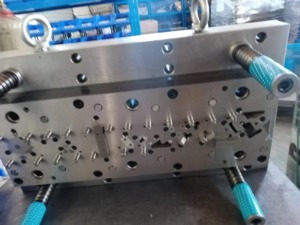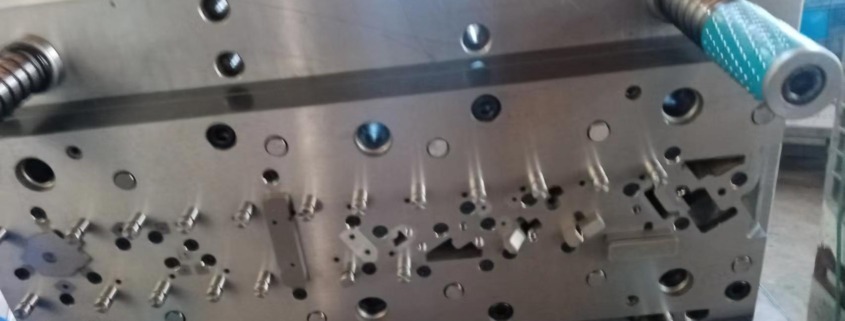1.2 Characteristics and Application of Stamping
Characteristics and Application of Stamping
1.2.1 Characteristics of stamping

Stamping production relies on dies and presses to complete the processing process. Compared with other processing methods
The following four features:
① Stamping generally does not need to heat the blank, and does not produce a lot of cutting materials like metal cutting, so it not only saves energy, but also saves metal materials. It is one of the less and no chip processing methods, and the obtained stamping parts generally do not need to be processed.
② The dimensional accuracy of stamping parts is guaranteed by the die, so the quality is stable and the interchangeability is good.
③ Parts with thin walls, light weight, good rigidity, high surface quality and complex shapes that cannot or are difficult to manufacture by other processing methods can be obtained due to the use of molds.
④ High productivity, easy operation, easy mechanization and automation. Common press machine is used for punching, with dozens of pieces per minute; It can be produced by high-speed press machine, with hundreds or more pieces per minute.
Stamping also has some disadvantages, mainly reflected in the two problems of noise and vibration during the stamping process. These two problems are not completely caused by the stamping process and die itself, but mainly caused by the backward traditional stamping equipment. With the progress of science and technology, these two problems have been gradually solved.
1.2.2 Application of Punching
(1) Field of application
Due to the above-mentioned prominent characteristics of the stamping process, it has been widely used in modern production. Based on relevant surveys and statistics, stamping parts account for about 75% – 80% of agricultural machinery products, motorcycles and automobiles; In bicycles, watches, sewing machines,stamping parts account for about 80%; Stamping parts account for about 90% of radio, television and camera products; Stamping parts also account for a large proportion in aerospace industry; In addition, there are also metal food cans, Deep drawn enclosures,metal boxes, aluminum pots and cans, enameled basins and bowls, stainless steel cookers, tableware, etc. that are processed by die stamping, and even the computer hardware is lack of stamping parts. In a word, in today’s mechanical, electronic, light industry, national defense and other industrial sectors of parts, forming methods also turn to the priority of the stamping process.
Statistics show that the proportions of various steel types in the world are shown in Table 1-6, and most of the plates and strips are used for punching.
Table 1-6 Proportions of Various Steel Types
| Classification | strip | sheet | bar | Profile | wire | pipe |
| Percentage | 50 | 17 | 15 | 9 | 7 | 2 |
(2) Scope of processing
It can process various types of stamping parts, ranging from stopwatch watch to automobile longitudinal beam. The thickness of punching material has reached over 20mm. Therefore, the punching processing range is large and the adaptability is strong.
Stamping materials can be classified into ferrous metals, nonferrous metals and some non-metallic materials.
(3) Precision of stamping parts
For general stamping parts, the accuracy can reach IT10~IT11; Precision of precision punching parts can reach IT6~IT9: the precision of general bending and deep drawing parts can reach IT13~IT14.
(4) Surface roughness of stamping parts
Ordinary blanking Ra can reach 3.2~12.5 μ m. Fine punch Ra can reach. 3~2.5 μ M.



